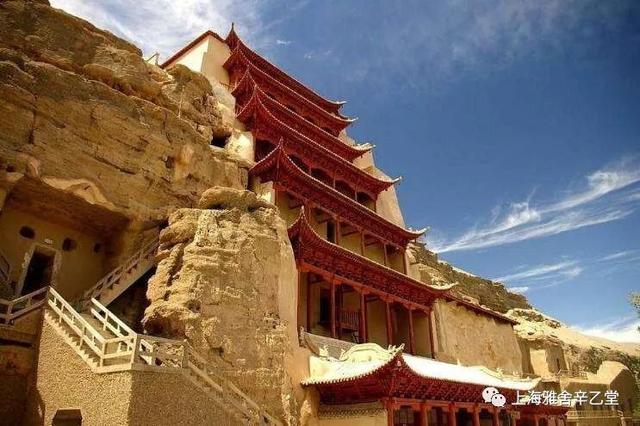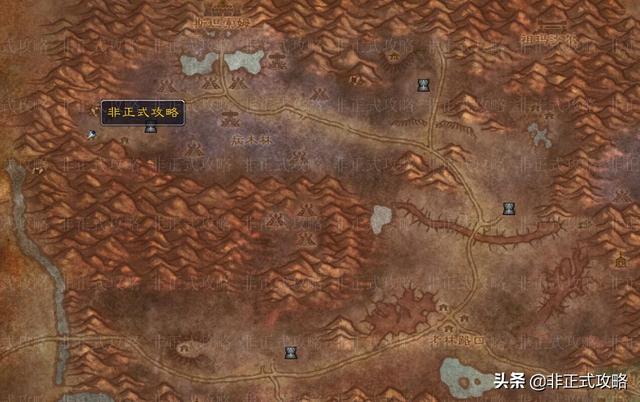徽派建筑白墙黛瓦四大特点:上海雅舍辛乙堂
本期编辑/上海雅舍辛乙堂
Yashe Studio
———————————
核心提示:甘肃民居主要成分当属四合院行制,也是汉民族自汉唐以来民居建筑发展的主流。这种建筑形式充分体现了儒家文化思想,充分体现了封建宗族制度的需要,极大限度的满足了大家族、大家庭的居住、生活需求。
Core tip: the main components of Gansu folk houses belong to the quadrangle system, which is also the mainstream of the development of folk houses of the Han nationality since the Han and Tang Dynasties. This architectural form fully reflects the Confucian cultural thought.

建筑是人类社会生活的三大要素之一和满足人们生活的需要而营造房屋与其他建筑物的艺术。甘肃是祖国远古文化发祥地之一,它的建筑也是我国 古老的独具地方风格的建筑体系之一。
Architecture is one of the three elements of human social life and the art of building houses and other buildings to meet the needs of people's life. Gansu is one of the birthplaces of ancient Chinese culture.
据考古发现:远在二三十万年前 器时代中期,甘肃就有人类活动了。公元前五千年左右的精细石器,公元前二千年左右的“半山期”、“马家窑期”等丰富的陶器,特别是 期秦安杨家沟的白灰面住室遗址的发现,反映了远古奴录社会劳动人民生活及生产力发展的情况。
According to archaeological findings, human activities occurred in Gansu Province as far back as the middle of the instrument age, 200 to 300 thousand years ago. The discovery of fine stone tools around 5000 BC...

甘肃历史上是一个多民族地区,由于历代统治阶级相互攻战征掠,使甘肃成了历史上军事争夺频繁的地区。这种状况反映到建筑上,使甘肃建筑非常突出地普遍具有军事的性质,出现了大量军事城池、长城边墙、关隘、烽火台、堡寨和驻兵屯田设施。
Gansu is a multi-ethnic area in history. Due to the mutual attacks and raids of the ruling classes in previous dynasties, Gansu has become an area with frequent military competition in history.

建筑文化在我国呈现出多样化的样貌,不同的地区和民族拥有着不同的建筑文化。那么,甘肃文化中建筑文化又如何呢?
architectural culture in China presents a diverse appearance, and different regions and nations have different architectural culture. So, what about the architectural culture in Gansu culture?
甘肃民居主要成分当属四合院行制,也是汉民族自汉唐以来民居建筑发展的主流。这种建筑形式充分体现了儒家文化思想,充分体现了封建宗族制度的需要,极大限度的满足了大家族、大家庭的居住、生活需求。
The main components of Gansu folk houses belong to the quadrangle system, which is also the mainstream of the development of folk houses of the Han nationality since the Han and Tang Dynasties.

受当地传统风水观念支配,院落大门多座院之东南,厕所置于院之西南角。院内雨水则汇流于西南排出院外。四合院大门多采用屋宇门形式。即是将倒座东侧稍间辟作门道,而在倒座后墙上开门的一种大门。门框、门扇坚实厚重,造形简约朴素。
Dominated by the local traditional Feng Shui concept, the gate of the courtyard is located in the southeast of many courtyards, and the toilet is located in the southwest corner of the courtyard. The rainwater in the hospital flows to the southwest and is discharged outside the hospital.
采用此种门的实用目的有二:一是天水历史上华戎杂处、战事频繁,兵灾匪患较多;倒座后墙坚固高竣,在此开门封闭安全。二是大门形制简朴可以藏拙不显豪富。除此而外,亦有部分大门采用对山式墙垣门,即大门对着前院东房山墙开南门,或对着西房山墙开北门。
There are two practical purposes for adopting this kind of gate: first, in the history of Tianshui, Huarong was miscellaneous, wars were frequent, and there were more disasters of war and banditry; The back wall of the inverted seat is solid and high, and it is safe to open and close the door here.

甘肃历史上处于封闭的内陆腹地,民风民俗都朴实而具有独特的特点,民居建筑依然如此。院落外各立面展现的是封闭的后檐墙外观,灰调、粗糙、厚实、冷峻;而院落内具有浓郁的内向界面,各单体建筑面向庭院的二维主立面,为庭院空间提供了明显的内向界面。
Gansu was located in the closed inland hinterland in history, and the folk customs are simple and unique, and the folk houses are still the same. The facades outside the courtyard show the appearance of the closed rear eave wall, which is gray, rough, thick and cold.
这种浓郁的内向界面强化了庭院的内向品格;四面廊道亦里亦外、亦外亦里的“过渡空间”、“中介空间”具亲和力,在金柱浓郁、内向品格的木质墙面的衬托下,使廊道更带有明显的室外内化性。如“冯国瑞故居”等。
This rich inward interface strengthens the inward character of the courtyard; The "transition space" and "intermediary space" of the four side corridors, both inside and outside and inside, have affinity.

中国传统的庭院式布局与封建礼教制约下的思想意识和心理结构相适应,围合的庭院式空间,构建了一个封闭的小天地,在这个封闭的小天地中,严整纵深的庭院组合,中轴突出的对称格局,提供了建筑空间的主从构成、正偏构成、内外构成和向背构成。这些空间构成都被赋予了礼仪上的尊卑第等意义。
The traditional Chinese courtyard layout is compatible with the ideological and psychological structure under the constraints of feudal ethics. The enclosed courtyard space has built a closed small world.
透过正院与偏院,正房与厢房,外院与内院,前庭与后庭等等空间的主从、内外划分,庭院组群充分适应了封建礼教严格区分尊卑、上下、亲疏、贵贱、男女、长幼、嫡庶等一整套的伦理秩序需要。如南北宅子、贾公馆、冯国瑞故居等正是中国传统的庭院式布局,体现了儒家“礼”文化意象。
Through the division of the main courtyard and the side courtyard, the main room and the wing room, the outer courtyard and the inner courtyard, the vestibule and the backyard, and so on, the courtyard group fully adapted to the feudal ethics.
同时,如冯国瑞故居等这样的民居四合院,四面房屋四面廊道的院落,很好地体现了中心庭院的明亮空间、檐廊“灰”空间、室内“暗”空间的层层过渡关系,这也体现出中庭式院落空间由公共空间到模糊空间再到私密空间的层次关系。
At the same time, residential quadrangles such as Feng Guorui's former residence and courtyards with four houses and four corridors well reflect the layer by layer transition relationship between the bright space of the central courtyard.
这种层次关系展现的建筑形态的内向品格,室内外空间的有机交融,以及对庭院内花木扶疏的自然景观的收纳渗透等等,都表现出天水民居庭院式布局审美上的人伦之“乐”,即“乐”的感情教化与和谐作用。
The introverted character of the architectural form displayed by this hierarchical relationship, the organic integration of indoor and outdoor space, and the reception and infiltration of the natural landscape with sparse flowers and trees in the courtyard.

免责声明:本文仅代表文章作者的个人观点,与本站无关。其原创性、真实性以及文中陈述文字和内容未经本站证实,对本文以及其中全部或者部分内容文字的真实性、完整性和原创性本站不作任何保证或承诺,请读者仅作参考,并自行核实相关内容。文章投诉邮箱:anhduc.ph@yahoo.com






